In an era of rapid transformation across the global apparel industry, few voices carry the depth of insight and experience that Robert Antoshak brings to the table. As Vice President of Global Strategic Sourcing & Development at Grey Matter Concepts, Antoshak draws on more than 30 years of leadership in textile and apparel to guide brands through an increasingly complex sourcing landscape. From advising governments and multinational firms to championing sustainable initiatives like the Regenerative Cotton Collective, his career reflects a unique blend of strategic vision and hands-on expertise.
In this wide-ranging interview, Antoshak shares his top priorities in his current role, reflects on the most profound changes he’s witnessed in global sourcing, and offers his perspective on the forces—both emerging and entrenched—that will shape the industry’s future. From geopolitics and nearshoring to digital traceability and sustainability, his insights cut through the noise to offer clarity on what’s next for apparel sourcing. We also explore his views on the potential impact of U.S. tariffs under a possible Trump presidency and ask him to identify the next major disruptor by 2030.
This conversation offers a rare opportunity to hear directly from one of the industry’s most respected strategists and thought leaders.
Business Journal: As Vice President of Global Strategic Sourcing and Development at Grey Matter Concepts, what are your top priorities in this role?
Antoshak: At this stage, my focus is on staying ahead of Trump’s tariffs, which makes strategy a central part of my role. I handle high-level interactions with suppliers, customers, government officials, and various organizations while managing a broad portfolio of responsibilities. Ultimately, it’s a strategic position—helping the company address business challenges, make critical decisions, and access the right resources to navigate today’s difficult economic and policy environment. My goal is to maximize the company’s potential both globally and within the U.S.
Business Journal: You have spent over three decades in the textile and apparel industry. Looking back, what have been the most significant changes in global sourcing you have witnessed?
Antoshak: Well, the most significant experience for me personally came when I first started in the business. I was in my 20s and had the opportunity to work with the Multi-Fiber Arrangement quota system as an Industry Advisor to the U.S. government. I traveled globally with U.S. negotiators, and by the time I was about 30, I had visited more than 50 countries, assisting the government by providing market information to support negotiations. At that time, the mission was to restrict—or as they called it, “manage”—trade.
Also Read: Say It Ain’t So: Why Slam India With Such High Tariffs?
Of course, that system disappeared long ago, and the industry changed dramatically. Its elimination created opportunities for certain countries to expand, with Bangladesh being a prime example. Bangladesh benefitted greatly after the quota program ended. For me, that was a very significant development because countries were then able to grow their economies more effectively and efficiently, without the distortions imposed by quotas.
Tariff reductions also played an important role. Lower tariffs in importing and consuming countries helped fuel a consumer boom in the West, particularly in the U.S., where excessive consumption became the norm. But that very boom also contributed to the challenges the industry faces today regarding sustainability and waste. In many ways, the industry’s own success gave rise to its next series of problems—issues that are now driving the sustainability movement, as the sector works to become a better steward of the planet.
Business Journal: You’ve been deeply involved in initiatives like the Regenerative Cotton Collective. How do you see regenerative cotton influencing the future of sustainable sourcing?
Antoshak: When I was a young consumer, cotton was the predominant fiber in apparel in particular, and it was also widely used in textiles. Today, that situation has flipped somewhat—synthetics now occupy a larger portion of the marketplace, for a variety of reasons. By and large, cotton has worked hard to address concerns about how the crop is grown and what inputs are required to produce it successfully.
There’s also recognition that cotton is grown differently in various parts of the world, shaped by different agricultural practices and requirements. In countries like the US, Australia, Brazil, and even Western China, production tends to be on an industrial scale. In contrast, in many other regions, cotton is grown on smaller family plots rather than large-scale farms. As a result, cotton is treated and categorized differently depending on its origin.
Also Read: While Tackling US Tariffs, Let’s Not Overlook the EU Hurdle
This diversity can lead to confusion about how cotton is grown and why it’s cultivated in certain ways. New initiatives, such as regenerative cotton, aim to bring more sustainable practices to the industry and, by extension, to textiles and apparel. Much like organic cotton, however, regenerative cotton faces challenges in scaling. It sounds promising and is certainly possible, but at this point it remains more small-scale. Moreover, it takes several years for a regenerative program to show real success. You just have to wait seasons for it to be done. Right, you’re right. So, it’s not quick. Yeah.
Business Journal: How important is digital traceability in building resilient and sustainable apparel supply chains?
Antoshak: This issue is highly critical today. At the most basic level, a portion of consumers want to know where their products come from—how they’re made and where the raw materials originate. Brands are under pressure to address this demand in the marketplace.
Secondly, and more complexly, regulations are in place to prohibit sourcing from regions where there is evidence of labor abuse or problems in cotton production. These restrictions make a truly traceable supply chain essential. If companies cannot document that traceability, the economic consequences can be significant.
So, in today’s environment, there are both strong customer-driven reasons and regulatory requirements that make it more important than ever for brands to ensure their claims are supported by evidence. In addition, brands must demonstrate clearly where their materials are sourced, ensuring they come from equitable origins, and that cotton growing practices, in particular, meet the highest standards possible within local communities.
Business Journal: You frequently write for Sourcing Journal and Just Style. What messages do you hope to leave with industry readers through your articles?
Antoshak: I try very hard to encourage people to think. I enjoy ideas and concepts, and I want people to engage with them—rather than me simply presenting a lot of economic data. Of course, there’s a place for that, but what I believe is more important is for people across the industry to step back, look at the bigger picture, and ask: What does it all mean? How does it all fit together?
From that perspective, maybe someone can come up with a new idea that helps address the specific challenges they’re working on. What I hope to do is instill a sense of broader, more strategic thinking. With my experience, I aim to shed light in ways that can be genuinely helpful as people progress in their careers.
Business Journal: How will Trump’s tariffs affect Bangladesh, India and Vietnam? can tariff-dependent businesses truly flourish or are they destined to decline?
Antoshak: Well, I think what’s happening is this: I’ve never been a fan of Trump’s tariffs. The whole approach has been carried out in a very haphazard way—intentionally, in my view. It was never meant to be simple or transparent; the goal was to create chaos in markets and around the world. It’s taken time for countries to reassess their relationships with the United States under this administration.
What we’re seeing now is the U.S. effectively isolating itself. As long as the current tariff regime remains in place, I believe the rest of the world will increasingly bypass the U.S. Trade flows and production that might have gone to America are being redirected, because many countries now have growing middle classes. Bangladesh is a good example—there’s a domestic middle class, but more importantly, the country has become a major exporter, supplying other markets at a faster rate.
With Bangladesh’s strong and progressive cut-and-sew sector, opportunities are emerging to grow exports to regions that may once have been secondary. Previously, the U.S. was the dominant market because of its size and profitability, but that’s changing. Now we’re witnessing a regional realignment—a direct result of Washington’s heavy-handed trade policies. As long as that continues, industries will be incentivized to find customers elsewhere.
This benefits countries like Vietnam, Bangladesh, and India. They no longer need to depend solely on the U.S. market. Of course, the U.S. is significant—it accounts for a large share of global consumption in textiles and apparel—but the rest of the world is larger still. Large populations elsewhere also need clothing, and producers are adjusting their strategies to tap into those markets.
If the U.S. eventually reverses course, companies may return. But in the meantime, new supply chains and customer bases are being established elsewhere, and that’s something Washington did not anticipate. At the end of the day, people are resourceful. They adapt, but it takes time to reorient production and trade flows. That’s exactly what we’re seeing now.
Another miscalculation, in my view, was the idea of reviving U.S. manufacturing quickly. Over the long term, perhaps—but not within the short timeframe of these policies. Scaling production in the U.S. is extremely difficult due to high capital costs, expensive labor, and a shortage of skilled workers. Domestic production is only feasible if paired with heavy automation, which itself is costly. And the question is: how do companies achieve a return on that investment?
So, what’s happening instead is that the larger apparel producers are shifting their focus. If we see any reshoring at all, it’s more likely to take the form of expanded regional production within the Western Hemisphere rather than large-scale manufacturing in the U.S. That will take time to develop, but it’s a more realistic path forward.
Business Journal: If you had to predict one major disruption in the apparel sourcing industry by 2030, what would it be?
Antoshak: That’s a really good question. I feel the greatest disruptor for the industry right now is more likely to be the changing geopolitical environment. Some may argue it will be sustainability, and that will certainly play a role, but we’re living in a time of profound change.
The world is shifting from a single global order to a more fragmented structure. That transition will be significant for companies used to selling worldwide, creating both disruptions and new opportunities. The result, I believe, will be an industry that, in many cases, becomes more regionally focused, depending on how these dynamics play out. By 2030, we may have a clearer understanding of where things are headed.
We also need to consider the permanence of measures like Trump’s tariffs. For example, they’ve been challenged in U.S. courts and could eventually disappear—but the uncertainty makes it difficult to plan. So rather than gamble on outcomes, I think governments and industries will increasingly look inward, strengthening their own regions’ textile and apparel production and relying on those markets to sustain growth.





